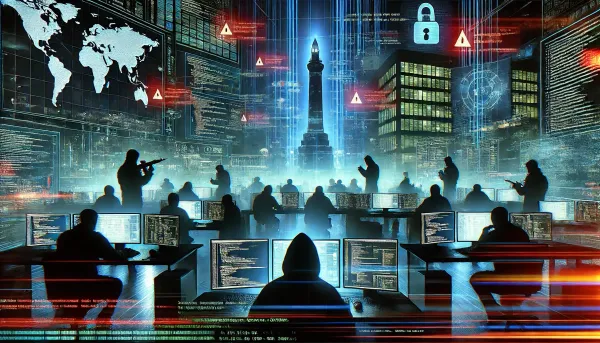
Unmasking Salt Typhoon: Cyber Threats to Telecoms
Salt Typhoon—also referred to by various names across cybersecurity firms (e.g., Earth Estries by Trend Micro, Ghost Emperor by Kaspersky)—is attributed to state-sponsored actors linked to China. This group has been active since at least 2019 and is noted for its targeting of government entities and telecommunications networks primarily in Asia, though their reach now extends significantly into Western countries.
According to cybersecurity experts, Salt Typhoon exhibits remarkable capabilities in lateral movement and reconnaissance, often exploiting vulnerabilities in widely-used platforms such as Microsoft Exchange through methods detailed in several CVEs from 2021 (CVE-2021-26855, CVE-2021-26857, etc.) to gain initial access.
Intelligence Collection Through Lawful Interception Systems
The recent breach reported by the Wall Street Journal indicates that for an undetermined duration, hackers may have penetrated systems used for handling court-authorized wiretap requests. This intrusion not only allows for the collection of sensitive communications data but also poses a significant concern regarding the integrity of ongoing investigations. The implications extend to the potential compromise of personal data for millions of Americans utilizing these telecommunications services, making this breach a particularly egregious violation of trust.
Scale of Impact
Reports suggest that the attackers likely had access to broader internet traffic alongside targeted networks. This effectively enables real-time surveillance capabilities, putting critical infrastructure at risk and challenging the protective measures currently employed by ISPs. The strategic targeting of lawful interception systems further emphasizes the attack’s implications for both domestic law enforcement and national security as a whole.
Technical Analysis of Attack Vectors
Exploitation of Vulnerabilities
Historically, Salt Typhoon has leveraged common vulnerabilities to facilitate penetrations such as the ProxyLogon vulnerabilities found in Microsoft Exchange Servers. With reports indicating that they accessed the internal infrastructure of telecom providers—potentially even Cisco routers—the continued reliance on certain technologies underscores a precarious security posture prevalent in critical infrastructure domains.
Potential Use of Custom Malware and Tools
Previous discoveries of custom malware deployed by Salt Typhoon, including backdoors like SparrowDoor, demonstrate a clear advantage in their operational methodology. The utilization of sophisticated tools such as Mimikatz for credential harvesting and Windows-based rootkits (e.g., Demodex) highlights a trend toward tool-sharing within APT groups, a byproduct of the collaborative nature of state-sponsored hacking.
Reconnaissance and Lateral Movement
Experts strongly believe that gaining access to lawful interception architecture required extensive knowledge of the network layout and segregation—which could involve circumventing multilayered security frameworks often found in ISPs. Evidence suggests that the actors not only infiltrated the corporate networks of the ISPs but were able to navigate through several separated sub-networks, possibly conducting comprehensive reconnaissance to locate and exploit sensitive assets.
Industry Response and Long-term Implications
Regulatory Oversight and Cyber Hygiene
The ramifications of this breach entail substantial discussions surrounding regulatory oversight and the need for heightened cyber hygiene in telecommunications and critical infrastructure sectors. Enhanced regulatory frameworks may be required to enforce stringent controls and auditing measures that focus on both end-user connections and backend operational systems.
Continuous Security Assessments
Organizations must initiate robust and regular security assessments of their networks, insisting on strict segregation of sensitive information accessible only through multi-factor authentication (MFA) and continuous monitoring. Implementing closed-loop incident response strategies must become a priority to minimize the potential impact of such breaches.
Enhanced Collaboration and Threat Intelligence Sharing
A coordinated response involving governmental entities, cybersecurity firms, and telecommunications providers is essential. Initiatives establishing protocols for real-time threat intelligence sharing could prove invaluable in the face of evolving threats from state-sponsored actors.
Conclusion
The breach of AT&T, Verizon, and Lumen by Salt Typhoon is not merely a testament to the vulnerabilities of specific companies but an overarching signal of the readiness of state-sponsored groups to exploit critical national infrastructure. The implications for intelligence collection, national security, and the privacy of American citizens cannot be overstated. As such, the telecommunications sector, regulators, and cybersecurity professionals must unite in a proactive stance, employing enhanced defenses and fostering continuous innovation to thwart future incursions. By doing so, they can better safeguard against increasingly sophisticated cyber adversaries and preserve the integrity of national security interests.